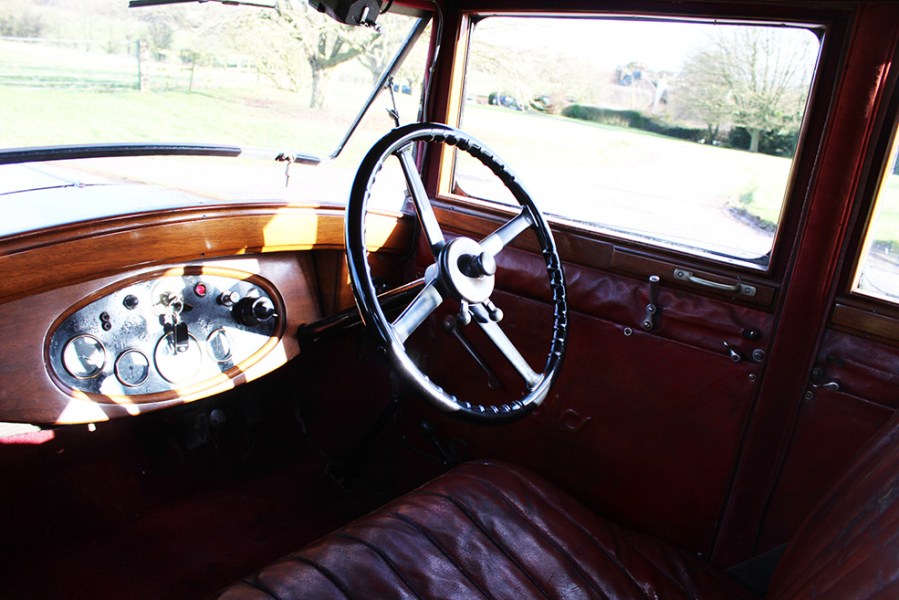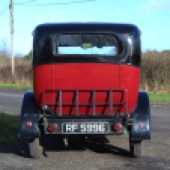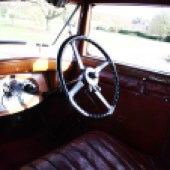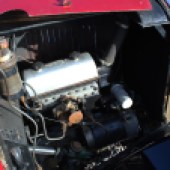Humber enjoyed success as an independent firm before its tenure as a Rootes brand. We sample a 1929 Humber 9/28 to learn more
Words: Jack Grover
Although best remembered as making big, upmarket cars for the Rootes group, during its independent years Humber Limited had been Britain’s second-largest car maker. But the arrival of low-cost mass-produced cars such as the Austin Seven, Singer Junior and Morris Minor left Humber by the wayside, still offering large, well-appointed and high-quality carriages to the well-off. The 9/28 was the company’s smallest model, costing three times as much as a ‘baby Austin’.
But for those who wouldn’t have been seen dead in the utilitarian likes of the Austin Seven, the nine ‘tax horsepower’ Humber was very well-regarded, offering a big, comfortable, reliable, prestigious car with low running costs. The original model was the 9/20, launched in 1925, which became the 9/28 in 1928. The new models used the same 1056cc unit with the unusual inlet-over-exhaust design that Humber was very attached to, now with coil ignition and a new carburettor to make an extra eight horsepower on the dyno.
The 9/28 also boasted coupled four-wheel brakes. The 9/28 came with a new six-light steel saloon body, making it significantly heavier than the fabric-skinned saloons and open tourers of the past. Contemporary reviewers thought this did nothing for the car’s aesthetics or its performance. Just 1250 examples were built in a little less than two years. In fact, by the time this one was made, Humber had been purchased by Hillman in the first phase of the Rootes brothers’ empire-building programme. The existing Humber models would remain on sale until 1930 at a reduced price – this 9/28 would have cost £220 as a rolling chassis and £350 with the steel saloon body.
Getting into the Humber is almost the most challenging part of the whole business. There is very little spare room between the big steering wheel and the seat, and the handbrake and gear lever are both on the driver’s right hand side. I quickly discovered that it was easier to get in the nearside and slide across the full-width seat, the leather of which is a lovely deep ox-blood red colour, free from any damage or even signs of excessive wear. The same goes for the sofa-like rear seat and the rest of the interior trim, although a couple of the seams in the headlining have frayed, which you can allow for with the passing of 90 years.
Cracking open the slow running lever on the steering wheel, setting the ignition control to its maximum and pulling open the choke control (a lovely bit of polished stainless steel which slides out like a telescope) gets the engine ready for starting. Then you have to find the tiny little button on the floor with your left foot. Equipped with a dyna-starter, the little engine spins over almost silently before quickly catching into a sonorous idle full of smooth mechanical noise.

Whether you are setting off or moving, selecting gear is a slow, methodical job. Push the clutch, squeeze the release catch on the lever and apply firm but gentle pressure. With everything aligned just right, the gear will engage smoothly – rush things even a little and you will get grinding noises. Once on the move, I quickly found that gearchanges take place over many seconds, with double de-clutching being required on both up- and down-shifts. Taking up the drive on the cork-lined clutch needs a similar amount of finesse to avoid nasty lurches. Once moving you mustn’t forget to move the spark control back to its mid point.
The 9/28 is somewhat over-geared for its power and weight. Although fairly eager in the lower two gears, thunking into top gear (which immediately removes the bandsaw-like whine of the straight-cut cogs) does leave the little engine working hard. On hills, you either settle for slogging away gamely in top gear, with each exhaust stroke burbling out the tailpipe, or stretching things out in a second-gear crawl. It seems that the former is being kinder to the old car, and even doing that the mercury in the Boyce MotoMeter on top of the radiator never climbed much more than one third up its scale.
On smoother ground, the Humber lopes along in a heavy-duty, under-stressed sort of way at 30mph, maybe 40 given enough space. Those coupled brakes (the pedal is on the right, with the accelerator in the middle, which you get used to amazingly quickly) work well provided you’re willing to press on them suitably hard and with enough anticipation. The steering manages to be both heavy and vague, but the solid heft of the car means that it sits nicely on the road at any speeds it can manage. If one word can sum up the 9/28, it is ‘stately’.
In its own way the Humber is just as rewarding to drive as a sports car. It certainly requires a similar level of attention and skill from the driver. There is real satisfaction in slowing for a sharp junction and going from third, to second, to bottom gear in succession without a single gnashing of gear teeth. In over an hour with this car, it hasn’t put a mechanical foot wrong.
With enough planning to avoid fast roads, you could easily and confidently set out on an enjoyable cross-country drive on a summer’s day in this nonagenarian – and turn heads when you reach your destination.











